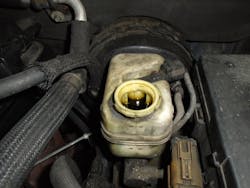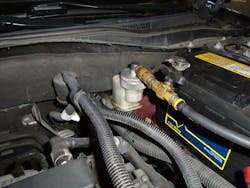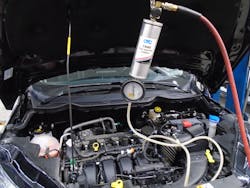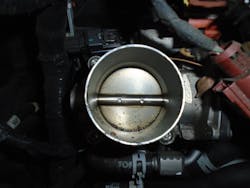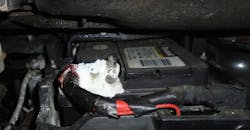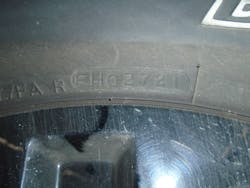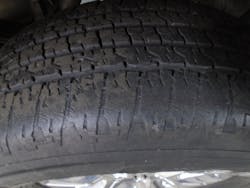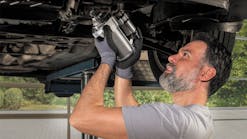Content brought to you by Motor Age. To subscribe, click here.
What You Will Learn:
• Maintenance doesn't cost, it pays
• Many customers are willing to take proper care of their vehicles if it means preventing breakdowns
• It's our job as technicians to educate our customers on the importance of preventive maintenance
As automotive technicians, there are three targets we try to hit when we service a vehicle:
- Fix it right the first time, on time
- Fix it most cost-effectively
- Get paid appropriately
But a fourth objective seems to get lost in the shuffle, which is our responsibility to the vehicle owner. In most cases, a person only communicates with his or her vehicle through the technician. We are translators. We speak both automobile and human. You could even say we're bilingual.
Therefore, the customer must depend on us to keep their vehicle running safely and efficiently. For most people, this means keeping their life running safely and efficiently. A person's vehicle usually makes the top-two list of the most important non-living things in their life. When it goes bad, so does their world. This makes it our responsibility to offer the customer a comprehensive report on the condition of their vehicle, along with recommendations of how to best handle any present or pending issues.
When I was a kid, I read an article (yes, there were printing presses way back then) entitled "The Auto Mechanic, America's Unsung Hero." The article considered what would happen if all the automotive technicians went on strike, compared to other tradesmen like plumbers and electricians. The author inferred that soon the trucks would stop trucking, and the work vans would stop working, leaving the plumbers and the electricians "pulling a little red wagon filled with tools." The author's outlook was slightly extreme, but you get the point. What we do is important, and along with it comes great responsibility.
The journey to a car's reliability and longevity starts with maintenance. A schedule of recommended maintenance intervals is available from all manufacturers. Unfortunately, many car owners see the owner's manual as an object that gets in the way when searching the glove box for napkins. It's up to us to study the maintenance schedule and recommend the applicable services. It is not always easy for the customer to understand the importance of performing scheduled maintenance and the consequences of ignoring these services. Here's a list of maintenance items and the things a car owner and the tech should know:
Transmission fluid exchange
During the initial transmission break-in, the transmission fluid becomes contaminated with metal and clutch material particles. The filter captures most of this debris, but some particles are suspended in the fluid. This can lead to premature wear of transmission components. The dumping of debris into the transmission fluid continues throughout the life of the transmission but is more prevalent during break-in. Because of this, the first transmission fluid exchange is crucial.
Automatic transmissions run at very high hot temperatures. Transmission fluid breaks down over time due to these high temperatures, causing transmission slippage and premature transmission wear.
Beware of the customer who requests a transmission fluid exchange. Quite often they are experiencing a transmission concern, and a transmission fluid exchange will not fix it. Always road-test the vehicle before changing the transmission fluid. Verify there aren't any transmission issues you could get blamed for later ("Ever since you replaced my transmission fluid)."
Coolant exchange
Antifreeze has a high boiling point and a low freezing point, and it remains stable during rapidly changing engine operating temperatures. Antifreeze conducts heat very well, making it ideal for removing heat from the engine and transferring it to the atmosphere through the radiator. Antifreeze has low viscosity, making it easy to pump, and aids in lubricating the water pump. Antifreeze loses all these properties with age.
Electrolysis occurs when electrical current flows through the cooling system. Electrolysis causes quick deterioration of cooling system components. The water pump, radiator, heater core, hoses, and the engine can all fall victim to coolant deterioration. The chances of this happening are much greater with old antifreeze. The coolant should be replaced at the first sign of cooling system component failure and proper maintenance intervals.
Brake fluid exchange
The most crucial property of brake fluid is that it maintains a stable viscosity and compressibility throughout its entire operating temperature range, from very cold to very hot. The negative property of brake fluid is that it's hygroscopic, which means it absorbs water.
Water in brake fluid significantly lowers its boiling point. The dry boiling point of DOT 3 is 401 degrees F. The wet boiling point (defined by the temperature at which the fluid boils after absorbing 3.7 percent water by volume) is 285 degrees F. That is a big difference. Since brake fluid temperatures at the calipers can easily exceed 200 degrees F, this could be a problem.
The fact that water freezes also tends to complicate things a bit. Water-contaminated brake fluid turns dark, damaging master cylinders, wheel cylinders, calipers, and hydraulic control units (HCUs). Notice how dark the contaminated brake fluid is (Figure 1). A pressure bleeder connected to the master cylinder is the best way to flush the brake system (Figure 2).
Differential oil exchange
During regular differential operation, gears mesh at high speeds, high torque, and high temperatures. This causes metal to contaminate the fluid, especially during break-in. Limited slip differentials use clutches that release clutch material into the fluid.
All differentials are vented. The vent must be open to the atmosphere as an escape route to prevent pressure build-up from the hot fluid. But this also allows a passageway for environmental hazards such as dirt and water to enter the differential housing.
Differential fluid exchange intervals are dependent on operating conditions. High loads like towing or off-road use dramatically decrease the time between differential fluid exchanges.
Spark plug replacement
Spark plugs don't last forever because they work so hard. Depending on the situation, they can be asked to fire well over 1,500 times per minute into a combustion chamber that can easily reach temperatures of 4,500 degrees F.
Most manufacturers specify spark plug replacement intervals of 90,000 to 100,000 miles, and shorter for heavy-duty usage. Older, lower-mileage engines are also candidates for a fresh set of spark plugs. The guy who putts around town, rarely reaching full engine operating temperature for long, plays havoc on spark plugs. The longer an engine is in cold enrichment mode, the longer the spark plugs are firing into a cold, rich mixture. Spark plugs need time to burn away that nonsense while firing into a clean (near 14.7:1 air/fuel ratio) combustion chamber.
I suggest you recommend a spark plug replacement on any vehicle over seven years old with original plugs, regardless of miles. Replacing spark plugs will most likely increase fuel economy and performance. You can say this to a customer with confidence.
Fuel injector and induction system service
Most of you remember that gummy, varnish-like goo that would build up inside carburetors. We have no reason to believe that the same deposits aren't manifesting inside fuel injectors. The spray holes at the end of an injector are very small, and the armature and the needle need to move freely without sticking. Deposits are the reason for most of the fuel injectors we replace that are clicking but not properly delivering fuel.
A sound fuel injector cleaning system pushes cleaning solvent (at the system’s correct operating pressure) directly through the injectors, bypassing the rest of the fuel delivery system. Cleaning the injectors should increase fuel economy and performance. Ensure the engine is at operating temperature before performing a fuel induction service (Figure 3). The air/fuel mixture ratio while running a cleaner is much leaner than on gasoline, so a cold engine doesn’t run well on it.
Most manufacturers do not suggest performing a fuel induction service on a turbocharged engine. Their studies have shown that turbochargers can be damaged by small pieces of carbon dislodged from the combustion chamber by the cleaner.
Power steering fluid exchange
That silvery substance you see floating in the power steering fluid is from the inside of the aluminum rack and pinion steering gear assembly. The rotary valve turning inside the housing and the piston moving from end to end create metallic mud in the fluid. This is why it's not uncommon to replace a power steering pump due to steering gear failure. Replacing the fluid will surely increase the life of both components.
Throttle body service
Because of the positive crankcase ventilation (PCV) system, sludge on the throttle plates is unavoidable. Manufacturers have been coating throttle plates and throttle body housings with a non-stick substance, so the sludge won't stick. This doesn't seem to be working well; the sludge still sticks. Throttle body sludge messes with the throttle position sensor (TPS) signal because it keeps the throttle plates from closing to the position the powertrain control module (PCM) recognizes as idle. This can cause a surge at idle. If the sludge is extreme, it can cause the throttle plate to stick during acceleration, especially when cold (Figure 4). This is more than enough to change the TPS signal at idle and to block a portion of the idle intake air.
So here is the conundrum. The manufacturer says not to clean the throttle body because the cleaner removes the protective coating that's supposed to keep the throttle body from sludging up. However, there are times when the only way to fix a driveability issue is to clean the throttle plates or replace the throttle body. My call.... if it's sludged, it must be cleaned.
Battery service
The battery service is relatively basic. I load test the battery, clean the terminals and the battery posts, and spray some protectants on the terminals. Here are some things to consider.
Dirt on the top of the battery can drain it of its charge. This oily crud is a conductor, allowing current flow between the two battery posts. So, cleaning the battery should be part of your service. Load-testing a battery is not enough. Perform a thorough visual inspection of the battery.
I have seen many cracked, leaking batteries pass the load test. Check the seams for seepage and the sides for bulging. Batteries are the leading cause of “no-starts.” The vehicle owner needs to know if there is a problem.
When you see a terminal covered in corrosion, spray the corrosion away and inspect the integrity of the terminal and the cable before selling the customer a battery service. Sometimes you'll find the remnant of what used to be a healthy terminal underneath all that corrosion (Figure 5).
Save the tires
It's common practice to take measurements of the tires’ tread when servicing a vehicle. If the tread is low, inform the customer that they need tires. Besides tread depth, we should also be looking at the other things that the tires have to tell us.
Right alongside tire depth in the order of importance is tire age. In time, tires start to dry rot. You can see the cracking on the sidewalls and inside the treads. When the rubber rots, it becomes hard. This means you can have a tire with limited traction even with a tread depth of 8/32 inches.
The tire production date is located on the sidewall after the DOT number, manufacturing plant, and brand digits. The production date is represented as a four-digit number. The last two numbers are the year of production, and the first two represent the week. So, a production date of 2721 means that the tire was produced in the 27th week of 2021 (Figure 6). Most manufacturers recommend replacing tires over six years old. I have seen many tires cracking at four years old, so use your discretion (Figure 7).
Uneven tire wear means that something is not right. We all know the signs of wheel alignment issues. Out-of-spec camber causes inside or outside wear, and a misaligned toe angle can cause the tires to feather. Loose steering and suspension parts can cause similar tire wear, so check the front end.
An overloaded vehicle can cause front tire wear due to the front suspension being lifted as the rear is sagging. This is a common problem with drivers loading their 1/2-ton pickups as if they are 3/4-ton pickups. When you see uneven tire wear, find the cause and inform the customer. Sometimes it's as simple as incorrect tire pressures, but the customer needs to know. Tires are not cheap; save the tires.
Embrace your role as a trusted and dependable service provider
Being an automotive technician is an honorable occupation that commands respect and makes you someone who is always in demand. Ask anyone who has been stuck on the side of the road. You are near the top of the list of people most folks need to trust and depend on. Being responsible for keeping a person's vehicle safe and reliable is a noble vocation. Embrace it.

